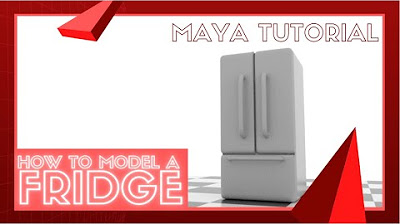Holy Cube Tutorial
Summary
TLDRThis tutorial guides viewers through the modeling of a 'holy cube' with holes on each side using Creo. It covers selecting the working directory, sketching a square, extruding the shape, and creating circular holes on the faces. The instructor demonstrates how to use the round tool to smooth edges and applies materials for a brushed aluminum finish. Finally, it explains how to render the final model, encouraging users to experiment with different effects in the rendering studio for enhanced visual appeal.
Takeaways
- 😀 Select a working directory before starting the modeling process.
- 😀 Create a new model and name it appropriately (e.g., 'holy_cube').
- 😀 Use the top plane to sketch a 30mm x 30mm square for the base of the cube.
- 😀 Extrude the square symmetrically to create a cube with a depth of 30mm.
- 😀 Sketch circles on each face of the cube to create holes with a diameter of 15mm.
- 😀 Use the extrude function to remove material through the cube for each hole.
- 😀 Apply a round tool with a 5mm radius on all edges of the cube to smooth them.
- 😀 Use a 2.5mm radius round tool on the inside edges of the holes for a polished finish.
- 😀 Apply materials (like brushed aluminum) in the render studio to enhance the cube's appearance.
- 😀 Experiment with rendering options to achieve the desired visual effect for the final model.
Q & A
What is the main objective of the tutorial?
-The main objective is to model a cube with holes that go through every side using Creo software.
What is the first step to begin modeling in Creo?
-The first step is to select your working directory and create a new model called 'holy_cube'.
How do you set the dimensions of the rectangle in the sketch?
-You use the dimension tool to set the rectangle's dimensions to 30 millimeters by 30 millimeters.
What does choosing 'symmetric' for the extrude depth accomplish?
-Choosing 'symmetric' allows the extrude to extend evenly on both sides of the sketch.
What tool is used to create the holes in the cube?
-The circle tool is used to create the circles for the holes on each face of the cube.
How is the material removed when extruding the circles?
-The 'remove material' option must be turned on to ensure the extruded circles cut through the cube.
What radius is applied to the edges of the cube, and why?
-A radius of 5 millimeters is applied to all edges of the cube to round them off, enhancing the model's appearance.
What final adjustments are made to the cube's materials in the rendering stage?
-The aluminium material's gloss is reduced to create a brushed aluminium effect.
What is the purpose of editing the scene in the render studio?
-Editing the scene allows you to change the background color and focus on the model more effectively.
How do you save the rendered image of the model?
-You select 'browse' to name your model, save it, and then press 'render' to generate the final image.
Outlines

此内容仅限付费用户访问。 请升级后访问。
立即升级Mindmap

此内容仅限付费用户访问。 请升级后访问。
立即升级Keywords

此内容仅限付费用户访问。 请升级后访问。
立即升级Highlights

此内容仅限付费用户访问。 请升级后访问。
立即升级Transcripts

此内容仅限付费用户访问。 请升级后访问。
立即升级浏览更多相关视频

Modeling a low poly house | Blender 3.4 Tutorial

Modeling a Fridge - Maya Tutorial

Exercise 1.1 Orthographic Drawing

Blender 3.0: Anime Girl Character Series Day 3 - Upper Body Modeling [ENG Sub] | Nhij Quang

this 3D text cube interaction shouldn't be possible in framer...

FUSION 360 TUTORIAL: DESIGN THE TITAN-1M | ACADEMY
5.0 / 5 (0 votes)
